|

|
|
The Pursuit of Happyness (2006)
Starring Will Smith and Jaden Smith
based on the book "The Pursuit of Happyness" by Chris Gardner |
| Reel
Face: |
Real
Face: |
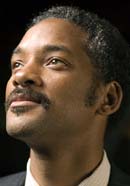 |
Will Smith
Born:
September 25, 1968
Birthplace: Philadelphia, Pennsylvania, USA |
|
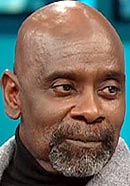
|
Chris Gardner
Born:
February 9, 1954
Birthplace: Louisiana, USA
|
|
 |
Jaden Smith
Born:
July 8, 1998
Birthplace: Los Angeles, California, USA |
|
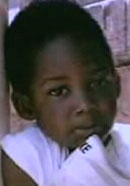
|
Christopher Gardner Jr.
Born: January 28, 1981
Birthplace: San Francisco, California, USA
|
|
|
"I chose to embrace the spirit of my mom—who despite the fact that she had too many of her own dreams denied, deferred and destroyed—still instilled in me that I could have dreams." - Chris Gardner on Oprah, December 2006
Questioning the Story:

How old was Chris Gardner's son when the actual events in the film took place?
The movie The Pursuit of Happyness depicts Chris Gardner's son Christopher (Jaden Smith) as a 5-year-old. In reality, Chris Gardner's son was only two-years-old when the film's plot unfolded in real life. The real Chris Gardner was okay with this dramatic liberty taken by the filmmakers,
"I understood that. You've got to give these guys some license. My son was 2 years-old when we were going through this. Did we have dialogue? Yeah. But there's obviously more you can do when the child is a little older. Give them some license." Will Smith's son Jaden, who portrayed Christopher Jr. in the film, was actually seven-years-old during the shooting of the movie.
Why is the word 'Happyness' spelled with a 'y' instead of an 'i' in the movie's title?
Chris also spelled the word 'Happyness' this way for the book's title. In a radio interview with KPFA 94.1 fm, Berkeley, stock broker Chris Gardner explained his spelling choice by saying the following, "There was a place once in Oakland [Ca] near the MacArthur Park station that became very, very, very important to my son and I at the most challenging stage of our journey, and they spelled happyness with a 'y' and that's why
it's spelled that way... It's personal [the spelling]. It's definitely personal. ...That particular place was a day-care center, and at this point in my life just getting my son into a day-care center was a major, major, major challenge and I had to learn about the food chain of day-care in our country.
The top of that food chain is the au pair or 'the nanny' who is there 24/7 365 with your child.
Then there's the licensed registered day-care center followed by the dependable babysitter, and at the bottom of that is something called a woman who keeps kids. Okay, she's not licensed, she's not registered, but she provided a service ...that for myself and a lot of other folks, for she not there, we could not have gone to work. So a step up for me from a woman who keeps kids, a couple of steps up, was a place called
Happyness, that day-care center."
What was Chris Gardner's childhood like?
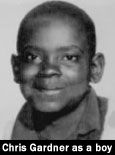 Although it's not depicted in the film, Chris Gardner had a difficult childhood. He was born in Louisiana but grew up in Milwaukee (that's where the car broke down that his mother and two uncles drove as they headed north to Canada in search of a better life). He lived with an abusive stepfather who beat his mother. When he
was about six, his mother tried to burn down the house with his stepfather in it. She was sent to state prison for four years. Chris stayed with relatives and in foster care. He saw his real father only twice in his life, once when he was twenty-eight and again at his funeral. Perhaps his most traumatizing experience
as a boy was when he was raped by a man. He later tracked down his rapist and paid him back by striking him with a cinder block. Although it's not depicted in the film, Chris Gardner had a difficult childhood. He was born in Louisiana but grew up in Milwaukee (that's where the car broke down that his mother and two uncles drove as they headed north to Canada in search of a better life). He lived with an abusive stepfather who beat his mother. When he
was about six, his mother tried to burn down the house with his stepfather in it. She was sent to state prison for four years. Chris stayed with relatives and in foster care. He saw his real father only twice in his life, once when he was twenty-eight and again at his funeral. Perhaps his most traumatizing experience
as a boy was when he was raped by a man. He later tracked down his rapist and paid him back by striking him with a cinder block.
Why did he move to San Francisco in 1976?
In 1976, Chris wanted a career in medicine, and he went to the West Coast for a prestigious research job where he worked under a hotshot young heart surgeon by the name of Dr. Robert Ellis. His research with Dr. Ellis involved discovering what concentration of Potassium best preserved the high-energy phosphates in the heart muscles during open heart surgery. He was paid only $13,000 a year when he started, and there wasn't
much more money to be put into the project. However, he did become an expert on the work, often explaining the details of the project to envious doctors, including some who would question his qualifications.
What motivated the real Chris Gardner to become a millionaire stock broker?
Chris attributes his motivation for success to one defining moment in March of 1970 when he was sixteen. He was watching Jacksonville vs. UCLA in the NCAA championship game. The announcers were talking about the futures of two players in the game, Artis Gilmore and Pembrook Burrows. Chris said aloud to no one, "Wow, one day those guys are gonna make a million dollars!" His mother Bettye Jean Triplettnée Gardner responded,
"Son, if you want to, one day you could make a million dollars." He absorbed her words, which stuck with him through the decades that followed.
Did Chris Gardner really approach a man in a red Ferrari 308 convertible?
Yes. This part of the The Pursuit of Happyness true story is a lot like the movie. In real life the conversation unfolded in a parking lot, not on the side of a street as the movie shows.
The encounter took place in 1981 when Chris was heading towards his car after leaving the nearby San Francisco General Hospital. He spotted the red Ferrari convertible, and he offered the man behind the wheel his parking spot.
"You can have my spot," he said, "but I gotta ask you a couple questions." As he did in the movie, Chris asked the man, "What do you do?" and "How do you do it?" The man answered, "I'm a stockbroker." To adequately answer the latter question,
Chris and the man set up a lunch meeting for a few weeks later to discuss the basics of Wall Street.
In real life, did the man in the red Ferrari help Chris?
In real life, Chris and the man in the red Ferrari, Bob Bridges, eventually met for lunch. They discussed Chris's chances of becoming a broker. Bob was one of the most successful stockbrokers in San Francisco at the time, earning over $80,000 a month. He worked for Donaldson, Lufkin, & Jenrette. Bob offered to introduce Chris to some of the branch managers at the different brokerage firms in town, and he subsequently set up meetings for Chris.
Did Chris really almost go broke selling bone density scanning units?
No. Chris Gardner never emptied his savings to buy a bunch of portable bone density scanning units like Will Smith's character did in the movie. However, he did work as a salesman in the medical supply field. He sold various products, which were mostly confined to one brand.
Did Chris really get hit by a car while chasing after a stolen piece of medical equipment?
In a rather intense scene in the movie, Will Smith's Chris Gardner is struck by a car as he chases after a stolen bone density scanner. This is an element of fiction added by The Pursuit of Happyness screenwriter Steven Conrad. I've come across no evidence, neither in Chris Gardner's book nor in his interviews, to suggest that the true story consisted of any
type of similar event. More than likely this is a plot device that Steven Conrad constructed in an attempt to keep our attention on the film's developing story.
Did he and his son really sleep on the bathroom floor of a subway station?
 Yes. They locked the door and slept on the floor of the MacArthur station in Oakland, Ca. As the filmmakers emphasized in the movie The Pursuit of Happyness, Chris and his son spent the entire night sleeping on the bathroom floor only once or twice. When people knocked and banged on the door Chris told his son to remain quiet. For a period of slightly more than two weeks, the BART (Bay Area Rapid Transit) subway facilities gave them shelter during the
darkest part of their homelessness. At times, they also slept on the BART subway trains or in waiting areas at the Oakland or San Francisco airport. Yes. They locked the door and slept on the floor of the MacArthur station in Oakland, Ca. As the filmmakers emphasized in the movie The Pursuit of Happyness, Chris and his son spent the entire night sleeping on the bathroom floor only once or twice. When people knocked and banged on the door Chris told his son to remain quiet. For a period of slightly more than two weeks, the BART (Bay Area Rapid Transit) subway facilities gave them shelter during the
darkest part of their homelessness. At times, they also slept on the BART subway trains or in waiting areas at the Oakland or San Francisco airport.
Did Chris really wait in line with his son for a room provided by a local church?
Yes. Unlike in the movie, in real life the overnight rooms provided by Glide Memorial Church in the Tenderloin were originally only for homeless mothers with children. Reverend Cecil Williams, who plays himself in the film, made an exception for Chris and his young son. Like in the film, the line for the rooms formed around 6:00 pm and you had to be out by 8:00 am the following morning. Some nights Chris and his son were unable to make it in time, and they had to
stay at the subway station or sleep at the airport in the waiting areas. Reverend Cecil Williams and other community activists had been feeding the homeless out of Moe's kitchen in the basement of Glide. They continue to do so until this day. Chris Gardner, who utilized Glide's help in the winter of 1982 and early 1983, paid Cecil back 25 years later by helping to bankroll a $50 million project that Cecil and Glide undertook to create affordable housing for lower income
families. As part of the same project, a complex with business and retail shops was developed to create employment opportunities.
Did Chris's son really tell him that he was a "good poppa"?
Yes. This part of the movie The Pursuit of Happyness echoes the true story. Although, it happened after Chris and his son were off the street and living in their first place. Their power had been shut off because Chris hadn't paid the electric bill. He was giving his son Christopher a bath by candlelight when his son suddenly stood up in the tub and said, "Poppa, you know what? You're a good poppa."
Was Chris's wife Linda in the movie based on a real person?
Linda, played by actress Thandie Newton in the movie, is really a conglomeration of two women in Chris Gardner's life. One is his first wife Sherry Dyson, who he married on June 18, 1977. Sherry was a long distance friend who Chris talked to on the phone a lot, and who occasionally came to visit Chris in San Francisco. The two were married in a park near Sherry's parents' home. Sherry moved to San Francisco to live with Chris, where she found a job as an
insurance adjuster. Coming from a wealthier background, Sherry enjoyed the finer things like fancy dinners and hanging out with the artsy crowd, which included her cousin, writer Robert Alexander. At these get-togethers, Chris usually ended up talking with the same three guys, Barry "Shabaka" Henley, Danny Glover, and Samuel L. Jackson. They were not extremely well known actors at the time.
Sherry and Chris stopped trying to communicate with each other. They tried to have a child, but unfortunately Sherry miscarried during her first trimester. Chris, who was struggling to make ends meet doing medical research, took on a couple part time jobs to help them get by. The passion had abandoned their relationship, and Chris soon found himself fantasizing about other women and the sexual pleasures that he had given up by marrying Sherry.
It wasn't long before he cheated on his wife; the first time was a short fling with a woman he describes in his book as being a fellatio expert. When Chris ended it, the woman vandalized Sherry's car.
Following this affair, Chris hooked up with a woman named Jackie who lived down the street. Chris and Jackie engaged in a 30-day drug induced sexual marathon. They did cocaine to enhance their pleasure. Chris even went back east to New York City to meet Jackie's relatives. After returning to San Francisco and discovering that Jackie was pregnant with his son, Chris told Sherry that he was leaving her. Sherry moved to Oakland and it took nine years for the two of them to become legally divorced.
Chris subsequently moved in with Jackie, a decision that he admits was mostly about sex.
Did Chris ever do any other drugs?
As explained in the question above, Chris did cocaine to enhance his sexual relationship with his mistress Jackie, the eventual mother of his two children. In his book, Chris says that he once tried angel dust (PCP), and that he had to talk himself out of believing that he could fly. After taking the drug, he did 100 pull-ups on the heating pipe in his building. In the late seventies and early 1980s, Chris says that he tried stuff "now and then." He smoked weed to take the edge off. At one point in time
he even dealt drugs, but he quit after gangsters came to collect a small amount of money that he initially didn't have.
Did Chris really get the attention of a Dean Witter executive by solving the man's Rubik's Cube?
No. In one scene in the movie, a higher up broker from Dean Witter is trying to solve a Rubik's Cube during his cab ride home. Chris (Will Smith) claims that he can solve the toy and the man gives him a chance. Chris solves the Rubik's Cube and this inspires the man to give Chris an interview for
the Dean Witter training program. The Rubik's Cube is an element of fiction added by Pursuit of Happyness screenwriter Steven Conrad. In real life Chris Gardner did befriend a Dean Witter stock broker named Marty who helped him.
Did two police officers really arrest Chris Gardner for unpaid parking tickets?
Not exactly. Two police officers did come to his door and arrest him, but it was because Jackie (the mother of his son) had accused
him of domestic abuse. The two had been in an argument in which Chris grabbed hold of Jackie's wrists. When he let go she fell into a rose bush and was scratched. After being taken to the police station, Chris learned that he was also being charged with owing $1,200 in unpaid parking tickets. He stayed in Berkeley jailhouse from Friday afternoon until Monday when the judge was able to see him. Unable to pay off the parking tickets, the judge sentenced him to 10 days at Santa Rita,
the county prison in Northern California Central Valley. When he got out of prison he returned to his apartment to discover that it was empty. Jackie and his son were gone.
Did Chris really show up underdressed for his meeting with Dean Witter?
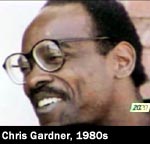 Yes, but he didn't come straight from jail. After getting out of jail and discovering that Jackie had removed his son and his belongings from their apartment, Chris went to stay at his friend Latrell Hammond's house. Without any dress clothes, the next morning he went to the interview with Dean Witter wearing his Members Only jacket and paint speckled sneakers. He met with Mr. Albanese, and he explained his attire by telling Mr. Albanese the truth, minus the jail part. He never made the
pants joke that is in the film. Yes, but he didn't come straight from jail. After getting out of jail and discovering that Jackie had removed his son and his belongings from their apartment, Chris went to stay at his friend Latrell Hammond's house. Without any dress clothes, the next morning he went to the interview with Dean Witter wearing his Members Only jacket and paint speckled sneakers. He met with Mr. Albanese, and he explained his attire by telling Mr. Albanese the truth, minus the jail part. He never made the
pants joke that is in the film.
Did the real Christopher Gardner look after his son while he trained at Dean Witter?
No. For four months after he started the training program, Chris didn't know the whereabouts of his son Christopher. Chris (the father) spent his nights at friend's houses or even under his desk at work. His child's mother, Jackie, actually located Chris at his friend Latrell's house. Jackie would call and Chris would hear his son crying in the background. They would argue and Jackie would hang up, never revealing her whereabouts.
Did Chris get paid as a trainee at Dean Witter?
Yes. When he was in the training program to become a stock broker Chris Gardner was paid $1,000 a month by Dean Witter. In the movie Will Smith's character is paid nothing.
Did Chris really donate blood for money?
Yes. He did this on several occasions. He felt bad about doing it, especially when he observed some of the lowdown, desperate characters doing the same thing. In real life, Chris Gardner discovered more ways to put a few extra dollars in his pocket. In a hotel lobby, he witnessed a man struggling with a cigarette machine. Unable to get his cigarettes, the man went to the front desk and asked for a refund since he lost his money in the machine.
For two weeks, Chris went to various hotels telling them that one of their vending machines ate his money. He was given an instant refund and was able to earn up to $25 a day doing this, though it made him feel horrible about himself.
Did unexpected kindness come in the form of prostitutes?
Yes. In real life when Chris could put together $25 for he and his son to stay in a room at The Palms motel, he often passed local hookers working the streets. Over time, they began to notice the man who went by with his young son in the stroller. Realizing that there was no mother around, they would occasionally slip little Christopher a five dollar bill. In his book, also titled The Pursuit of Happyness, Chris writes, "There was a purity in the help these women gave us,
with nothing asked in return. Kindness, pure and simple. On uncertain days, I thought of us as wandering in the desert, knowing that we were being led to a promised land and that God was sending his manna to feed us in a most unique way."
Did Dean Witter only hire one person from its training program?
No. The movie The Pursuit of Happyness implies that only one person was hired from the group of twenty candidates enrolled in the Dean Witter training program. In reality, the training program at Dean Witter accepted pretty much everyone who passed the licensing exam, which the trainees took at the end of the program. Chris did very well on the stock broker exam, scoring 88%.
Does Chris Gardner have a daughter not shown in the film?
 Yes. Chris has a daughter named Jacintha Gardner. She is four years younger than his son Christopher. Jacintha was born after the real life events in the movie took place. If this doesn't make sense, it is because Chris's son was really two-years-old at the time, not five as he
is portrayed to be in the movie The Pursuit of Happyness. Jacintha's mother is also Jackie (see above). Jacintha was conceived after Chris and Jackie split up. It happened when Jackie stopped by once to visit
Chris and their son in Chris's first home. Jacintha was born in Los Angeles in 1985, just after Chris had gone to work at the New York offices of Bear Sterns, the company he worked for after Dean Witter. Yes. Chris has a daughter named Jacintha Gardner. She is four years younger than his son Christopher. Jacintha was born after the real life events in the movie took place. If this doesn't make sense, it is because Chris's son was really two-years-old at the time, not five as he
is portrayed to be in the movie The Pursuit of Happyness. Jacintha's mother is also Jackie (see above). Jacintha was conceived after Chris and Jackie split up. It happened when Jackie stopped by once to visit
Chris and their son in Chris's first home. Jacintha was born in Los Angeles in 1985, just after Chris had gone to work at the New York offices of Bear Sterns, the company he worked for after Dean Witter.
Did Chris temporarily leave his children and move to New York City?
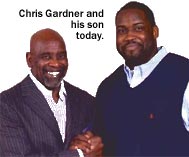 Yes. In 1985, while working as a stock broker at Bear Sterns, Chris left Bear Sterns San Francisco offices to work at their Wall Street offices in New York City. At the time, his 4-year-old son's mother Jackie was pregnant with their second child together, their daughter Jacintha. When he went to New York Chris sent his son to live with Jackie in Los Angeles. He wanted young Christopher to be with his sister. Approximately two years later in 1987, Chris left New York and moved to Chicago to
start his own brokerage firm, Gardner Rich & Company. He moved his then 6-year-old son Christopher and his 2-year-old daughter Jacintha from Los Angeles to live with him. Chicago was an ideal location for them since it was not far from his childhood hometown of Milwaukee. There were plenty of relatives around. Yes. In 1985, while working as a stock broker at Bear Sterns, Chris left Bear Sterns San Francisco offices to work at their Wall Street offices in New York City. At the time, his 4-year-old son's mother Jackie was pregnant with their second child together, their daughter Jacintha. When he went to New York Chris sent his son to live with Jackie in Los Angeles. He wanted young Christopher to be with his sister. Approximately two years later in 1987, Chris left New York and moved to Chicago to
start his own brokerage firm, Gardner Rich & Company. He moved his then 6-year-old son Christopher and his 2-year-old daughter Jacintha from Los Angeles to live with him. Chicago was an ideal location for them since it was not far from his childhood hometown of Milwaukee. There were plenty of relatives around.
How old was Chris when he made his first million?
Chris was 34-years-old the first time he earned over $1 million in a year. To reward himself, he bought a red and then a black Ferrari. The black Ferrari had been previously owned by basketball legend Michael Jordan, who had the car customized for his long legs. This was perfect for Chris, since he is also tall.
Does the real Chris Gardner have a cameo in The Pursuit of Happyness movie?
Yes. The real Chris Gardner appears in the final moments of the film just before the credits role. Dressed in a suit, he crosses the street and passes Will Smith and his son Jaden, both still in character.
Chris Gardner Video Interviews:
This collection of interviews with stock broker Chris Gardner ranges from the explicitly candid 2000 taxi cab interview to the much more formal 20/20 segment, which aired in mid 2006. In a separate video, Chris offers his thoughts on the movie and Will Smith.
| |
